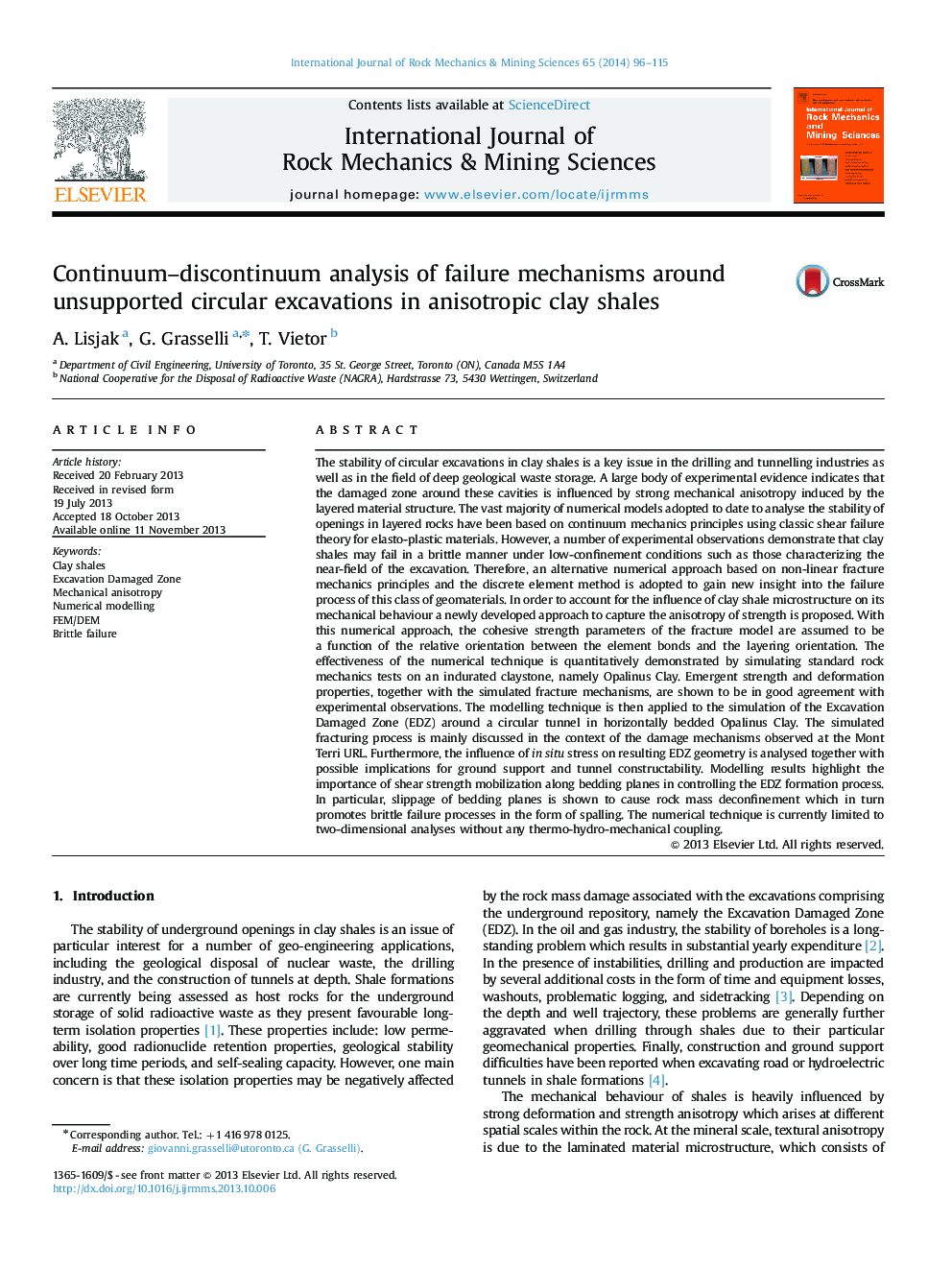| کد مقاله | کد نشریه | سال انتشار | مقاله انگلیسی | نسخه تمام متن |
|---|---|---|---|---|
| 809258 | 1468704 | 2014 | 20 صفحه PDF | دانلود رایگان |

• A new approach to model strength anisotropy with FEM/DEM was developed.
• The proposed method was validated by simulating rock mechanics tests on Opalinus Clay.
• The evolution of damage around a circular tunnel was investigated.
• The importance of delamination of bedding planes in triggering brittle failure was shown.
The stability of circular excavations in clay shales is a key issue in the drilling and tunnelling industries as well as in the field of deep geological waste storage. A large body of experimental evidence indicates that the damaged zone around these cavities is influenced by strong mechanical anisotropy induced by the layered material structure. The vast majority of numerical models adopted to date to analyse the stability of openings in layered rocks have been based on continuum mechanics principles using classic shear failure theory for elasto-plastic materials. However, a number of experimental observations demonstrate that clay shales may fail in a brittle manner under low-confinement conditions such as those characterizing the near-field of the excavation. Therefore, an alternative numerical approach based on non-linear fracture mechanics principles and the discrete element method is adopted to gain new insight into the failure process of this class of geomaterials. In order to account for the influence of clay shale microstructure on its mechanical behaviour a newly developed approach to capture the anisotropy of strength is proposed. With this numerical approach, the cohesive strength parameters of the fracture model are assumed to be a function of the relative orientation between the element bonds and the layering orientation. The effectiveness of the numerical technique is quantitatively demonstrated by simulating standard rock mechanics tests on an indurated claystone, namely Opalinus Clay. Emergent strength and deformation properties, together with the simulated fracture mechanisms, are shown to be in good agreement with experimental observations. The modelling technique is then applied to the simulation of the Excavation Damaged Zone (EDZ) around a circular tunnel in horizontally bedded Opalinus Clay. The simulated fracturing process is mainly discussed in the context of the damage mechanisms observed at the Mont Terri URL. Furthermore, the influence of in situ stress on resulting EDZ geometry is analysed together with possible implications for ground support and tunnel constructability. Modelling results highlight the importance of shear strength mobilization along bedding planes in controlling the EDZ formation process. In particular, slippage of bedding planes is shown to cause rock mass deconfinement which in turn promotes brittle failure processes in the form of spalling. The numerical technique is currently limited to two-dimensional analyses without any thermo-hydro-mechanical coupling.
Journal: International Journal of Rock Mechanics and Mining Sciences - Volume 65, January 2014, Pages 96–115